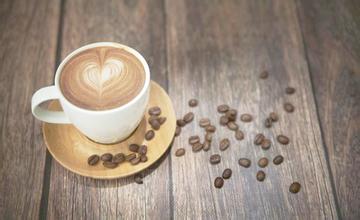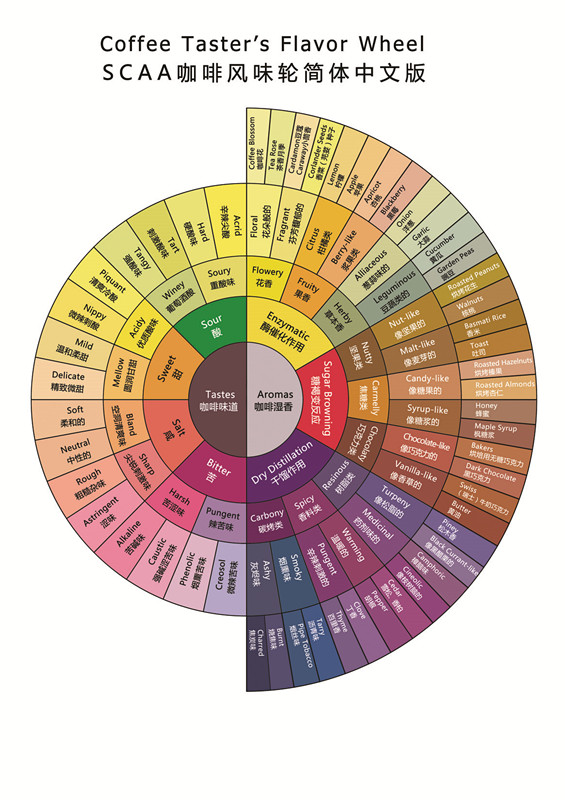Coffee knowledge points: coffee roasting talking about roasting process, roasting degree and roasting curve
When we pour the coffee beans at room temperature into the drum of the roaster after preheating, the temperature in the drum will be pulled down quickly and sharply, and the heat accumulated inside will be absorbed by the coffee beans and cause water evaporation. One minute to a few minutes later (the temperature recovery time is related to preheating temperature, heating source, drum design, raw bean quantity and other factors), as the bean surface loses moisture, the coffee bean surface temperature first stabilizes and then climbs rapidly. this moment and the corresponding temperature constitute a two-dimensional coordinate-temperature point.

What the baker needs to know is that the temperature rise slope (RoR,Rate Of Rise) of the coffee bean table reaches the maximum after ushering in the temperature recovery point, but the temperature difference between the raw bean table and the bean core is also huge. The following heating process, the internal heat absorption of raw beans, during which the moisture will gradually transfer to the bean surface, and then evaporate away, this process lasts a long time, the existence of bean surface, bean core temperature difference is also the best answer to the difference in baking degree between bean surface and soybean core-we often find that the Agtron color value of coffee cooked beans is smaller than that of coffee cooked beans ground into powder.
With the increase of coffee bean surface temperature and the decrease of the temperature difference between bean surface and bean core, a considerable proportion of water has been dissipated in this process. If you look at the sample in the sampling rod at this time, you will find that a light yellowish brown begins to appear, and then look down and smell it, and the original pure smell of hay is replaced by a hint of sweetness, which means that the time has come for chemical reaction to dominate baking. At this time, we should give enough heat supply so that a large number of chemical reactions that need to absorb heat and produce charming flavor can be carried out smoothly. It is precisely because of the addition of a large number of endothermic chemical reactions that the temperature rise slope of coffee beans we have observed began to slow down.
With the continuous absorption of heat, more and more volatile gases (mainly water vapor) accumulate in the coffee beans, which causes the pressure inside the beans to far exceed the external atmospheric pressure, even reaching 25 atmospheric pressure (2533 kPa). The internal pressure is so high that it is like a small bomb that is finally enough to tear the structure of the raw coffee beans. This critical moment is called First Crack.
In a sense, as long as there is an explosion of coffee beans, they can be cooled, ground and drunk, but it is still a very shallow baking degree, which may not be the best baking degree we want. Next, we should pay close attention to the stage of roasting, observe the color of coffee raw beans by sampling, smell the aroma changes of coffee raw beans, find the best baking degree, and then cool it decisively. We know that the ingredients in raw coffee beans are in the following order: sugars, moisture, fatty substances, proteins, acids, minerals, alkaloids (such as caffeine) and other volatile aromatic substances, such as the content of these substances, essentially determines the flavor of a cup of coffee drink.

One can't make bricks without straw. If the quality of raw coffee beans is not good, no matter how skilled the roaster is, everything is still out of reach. For those coffee beans of poor quality, using shallow roasting is like forcing a bloated person to wear a bikini-the poor body curve is undoubtedly exposed and the weakness is even more prominent. On the other hand, if you increase the degree of baking, you will be able to mask some of the sensory details. Many roasters who advocate shallow roasting put the quality of coffee raw beans in the first place.
First of all, coffee roasters need to accurately grasp the degree of baking. From the appearance, it is the appearance of the color of the bean surface, and from the smell, it is the expression of aroma, but in essence, it is the progress of the chemical reaction in the coffee beans-- in different degrees, the formation of sweet, sour and bitter aroma is different, the flavor presented is naturally different. In the roasting process of coffee beans, a large number of flavor-rich acids are first formed inside. With the continuous improvement of the degree of roasting, the acid in coffee beans gradually decomposed, the sugar converted from starch gradually coked, and the bitterness increased gradually. So we can say that with the improvement of the degree of roasting, the sour taste of coffee beans weakens and the bitter taste increases.
However, it is not enough to know the degree of baking. the process of baking is the process of heat transfer. the complex combination of different forms of heat transfer, such as conduction, convection and radiation, constructs a set of more complex heat transfer efficiency. every second affects the progress of the reaction, and we can only grasp this heat transfer efficiency by observing the temperature rise of the final audience-coffee beans per unit time. Thus controlling the whole baking rhythm, this complete rhythm appears to be the so-called baking curve. We might as well make a summary of coffee flavor: if we stir moderately quickly, the expansion rate of coffee beans increases, the extraction rate increases, the thickness of alcohol increases, the acidity increases, the acidity increases, and the bitterness weakens; if we stir slowly properly, the expansion rate of coffee beans decreases, the extraction rate decreases, and the thickness of alcohol decreases, acidity weakens, bitterness increases.
With the gradual improvement of the degree of baking, the aromatic substances formed are mainly small molecular weight compounds at first (during shallow baking). They are the most active, and a large amount of escape is first perceived by our sense of smell. the odors are mainly floral, grass and fruity, and then when it comes to moderate baking, most of the aromatic substances are medium molecular weight compounds, such as caramel, cream, chocolate, nuts and so on. During the gradual transition to deep baking, the aromatic substances formed are mainly some macromolecular compounds, which are the least active and finally come. In the sense of smell, the smell of resin, spices, charcoal and so on is very obvious.

Important Notice :
前街咖啡 FrontStreet Coffee has moved to new addredd:
FrontStreet Coffee Address: 315,Donghua East Road,GuangZhou
Tel:020 38364473
- Prev

Main points of coffee knowledge: CoE excellent cup coffee cup scoring standard is explained in detail
At present, the competition of fine beans in various countries adopts either CoE or SCAA mode, and up to 9 major coffee producing countries adopt Coe cup as the national competition mode. The following is the key description of the Coe Cup meter evaluation items and records, which can give you a basic basis when conducting a cup test, as well as an auxiliary reference when testing a single item: Aroma is the first evaluation at the beginning of the cup test.
- Next

Coffee knowledge points: coffee roasting talking about roasting process, roasting degree and roasting curve
When we pour the coffee beans at room temperature into the drum of the roaster after preheating, the temperature in the drum will be pulled down quickly and sharply, and the heat accumulated inside will be absorbed by the coffee beans and cause water evaporation. One minute to a few minutes later (the reheating time is related to preheating temperature, heating source, drum design, raw bean quantity, etc.), as the bean table loses moisture, coffee
Related
- What is the meaning of lactic acid fermentation with coffee bean treatment?
- How to judge the state of foam by sound?
- How does the latte pull out the unicorn pattern? Come to get for a little trick to improve the flower pull!
- Will flower pulling affect the taste of the latte?
- Do you know the history of coffee?
- The difference between honey treatment and sun washing what is raisin honey treatment?
- What kind of milk can a novice use to make coffee foam to keep the foam longer? The correct method and skills of milking tutorial sharing
- Why do washed coffee beans taste sour? Flavor characteristics of washed Coffee
- Introduction to the skill of how to practice the size and height of water injection around the circle of hand-brewed coffee
- How do beginners practice coffee flower drawing from scratch?

